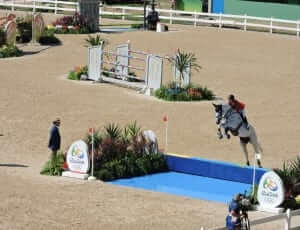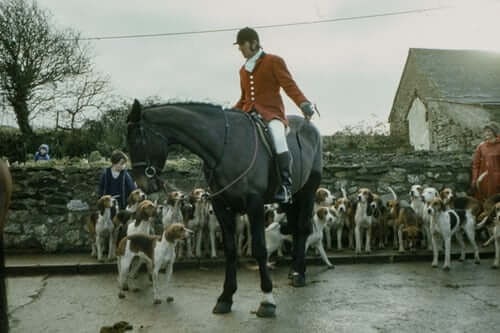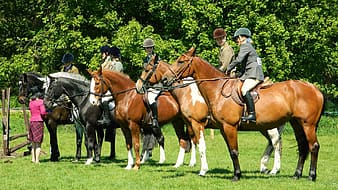I was a rider and trainer in the English discipline. My style of riding was Hunter Seat. The above photo is me at age 14, at the peak of my showing career. It was a Hunt Seat Equitation Over Fences Class. Below, I talk about two main styles of the English discipline and how they evolved. I will speak about Western discipline in another post.
The Hunt Seat Style of riding is mostly recognized in North America and represented by the United Hunter Jumper Association. https://www.ushja.org/ It represents the forward seat in riding. Hunt seat competitions include three styles of riding; Hunters, Equitation, and Jumpers. Just like Jumpers are a part of Eventing, they are also a part of the Hunt Seat competitions. The competition is called a Hunter/Jumper Show.
There are many styles of the English Discipline. I am going to discuss a couple of the most popular styles. A few might be familiar if you have ever watched the World Equestrian Games, https://www.fei.org/history/fei-world-equestrian-games and the Summer Equestrian Olympics, where Dressage, Eventing, and Show Jumping are represented. Eventing combines the three styles of riding that are Dressage, Cross Country, and Show Jumping into one competition. ttps://www.olympic.org/equestrian-eventing.
The English style of riding called Dressage dates back to 430BC. The Military Calvary used horses as part of the fight on the battlefield. After 2500 years of evolution, today’s movements reflect the specific movements necessary for the cavalry horse and rider teams to survive and win battles. During competitions, Dressage horses and riders ride in harmony with each other. One can watch competitions across the world at all levels.
Cross County evolved the same as Dressage. Calvary horses were taught how to jump at full speed and maneuver safely and skillfully up and over obstacles. On the battlefield, horses and riders came up to many obstacles that included fallen trees, brick, stone, and wood fencing. There were not only buildings and trucks to jump, but ponds to gallop through as well. Today, time is kept as horses and riders gallop Cross Country, maneuvering over and through similar obstacles.
Lastly, the Calvary had training exercises inside a ring. Horses were trained in the ring to jump obstacles of extreme height and width within certain time limits. Doing so perfected the horse and riders form and conditioned them so the team could safely jump various obstacles without knocking them down. Today in the Jumper competition, the fences they ride are timed, and the horse and rider team gets time added for having rail that hits the ground. The fastest time wins.

Dressage 
Cross country 
Show jumping
The English Disclipine also brings us the Hunter Style of riding. Fox Hunting influenced this style with horses and hounds. In 1650 an Englishman imported fox hunting hounds to the United States. They also introduced the red fox. The Fox, considered a pest, was notorious for killing livestock and needed to be controlled for farmers to save their chicken, sheep, and goat herds from being killed. Many countries outlaw this sport. Today in the United States and Canada, a Fox Hunt Organization, with the purpose of killing, is strictly forbidden by the Masters of Foxhounds Association. Since then, it has been a regular practice for Hunt Clubs to layout a urine trail, which created a natural path for the hounds to track their prey with no actual fox to catch.

Master of Hounds is in charge of the Hounds 
Whippers In Riders help keep the hounds in order 
Field of Hunters must never pass up the pink coated riders
In America, fox hunting is now called “fox chasing” by many hunts because they chase and do not kill the fox. Some hunts may go without catching a fox for several seasons, despite chasing two or more foxes in a single day’s hunt. Foxes are not pursued once they have “gone to ground” (hide in a hole). American fox hunters undertake stewardship of the land and endeavor to maintain fox populations and habitats as much as possible.
https://en.wikipedia.org/wiki/Fox_hunting

In competitions, Hunter Jumper style horses are judged while they jump a course of jumps similar to what would be found in the hunt field during a hunt. The horses and riders must ride on a course of 8-12 jumps calmly and quietly, still showing an athletic style and form throughout the course. These horses and riders wear similar outfits as the hunt field of riders would wear during a fox hunt. There are divisions for riders to jump fox hunt style fences from 2′ to 4’6″ high. The horse also has an opportunity to show on the flat, which means they would be judged at the walk, trot, and canter. The hunter jumper is a horse that would make a great horse on the hunt field. They would not be nervous or scared of the noises or the jumps that they come upon. They perform in a workmanlike manner as a true Fox Hunter would need to.
Hunt Seat Equitation became popular among those under18 years of age. Judges judge only the riders form over fences and on the flat. Asking the riders to perform specific tests would show the judge who could ride well while showing effective skills and horsemanship knowledge. The rider’s form must follow proper techniques and is an important influence as to the way the horse performs. The appearance of the horse and riders proper form is key to winning a class. In the last 30 years, equitation for adults has grown in popularity as well.
https://newtohorses.com/category/why-should-children-be-involved-with-horses/

